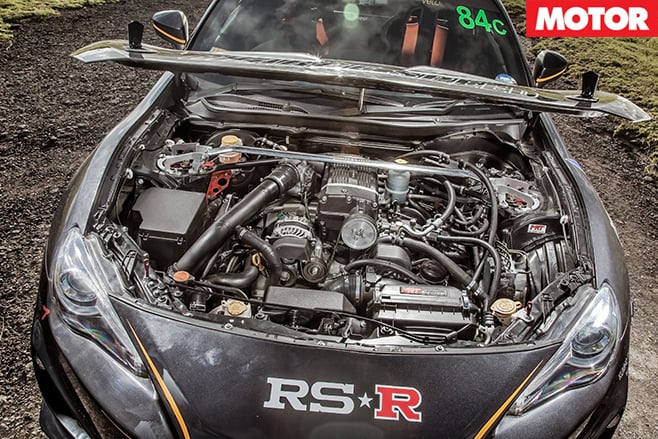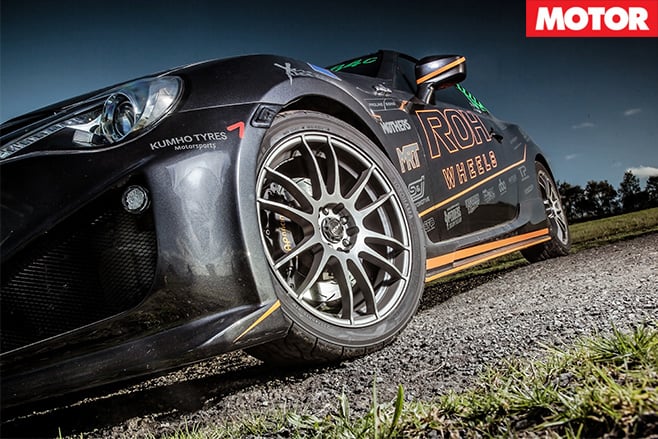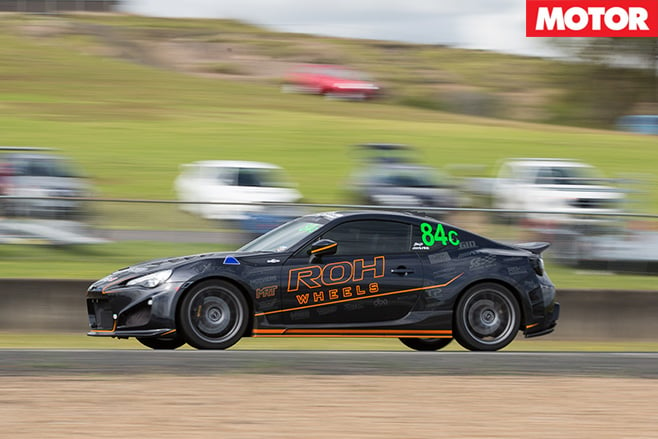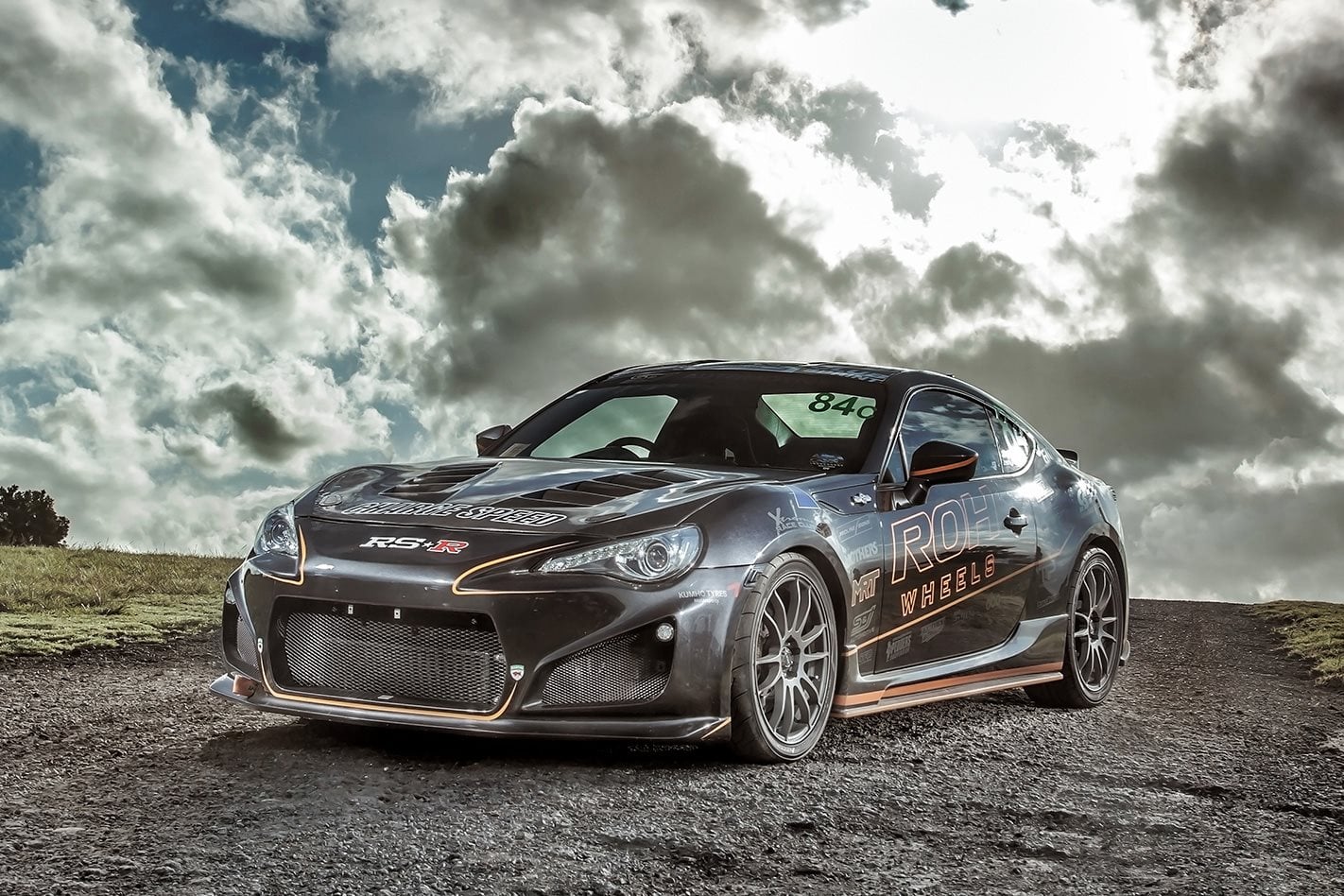Like most petrolheads, you’ve probably been wondering what an 86/BRZ would be like with a hefty helping of extra power.
Well, wonder no more. Here’s a Toyota 86 with both a supercharger and a turbocharger, the combination of which lifts power to an impressive 287kW at the hubs, or approximately 150 per cent more than standard. It’s the brainchild of ROH Wheels head designer, Glynn Helgeson, which explains the conspicuous graphics on the side of the car.
You might wonder why a wheel maker would go to such extremes – surely a nice set of rims and a cool bodykit would’ve sufficed? Helgeson explains the logic: “Every company has an 86 with cool graphics and mild mods – doesn’t get noticed. We required a point of difference [and] I think we achieved that.”

It’s literally do or die, which is why Helgeson has invited MOTOR along to sample his pet project at the World Time Attack Challenge at Sydney Motorsport Park.
We’ve sampled the ROH 86 before, back in December 2013, but there have been a few tweaks since then. Brett Middleton from MRT Performance – a man who knows a thing or two about Subaru engines – cracked open the FA20 2.0-litre boxer, strengthened it to cope with more boost and tuned it to run on E85 fuel.

Given we’ll be sampling the ROH 86 on track, it’s comforting that the latter two-thirds of the go-stop-turn equation have received as much attention as the former. RS-R coil-overs are complemented by a full array of Whiteline gear, while the standard stoppers are replaced by giant slotted DBA rotors clamped by Ferodo pads within AP Racing calipers.
The Azzurro wheels, designed by Helgeson, are an inch larger and wider at 18 x 8.0-inch and for World Time Attack are wrapped in 235/40 R18 Yokohama Advan Neova AD08 semi-competition rubber.

Leaving pit lane for the first session the rear wheels instantly light up as throttle is applied. Second gear, same result. Third is no better, the rear sliding wide as the supercharger’s instant torque easily turns the tyres.
This should be interesting, especially as traction control issues have led to the fuse that controls the ESP, TCS and ABS systems being removed. I’ve never driven Sydney Motorsport Park before, either.

Progress is further halted by a severe misfire all the way down the straight; as soon as fourth gear is selected the engine splutters and dies – selecting fifth or sixth doesn’t improve matters, so the next time around I pit. A phone call to Middleton confirms the car is cutting boost to protect the engine; mixing boost with a 12.5:1 compression ratio is always going to be a delicate juggling act.
Next morning, having had a night to think about how to drive this wild machine, we hit the track once more. Armed with some knowledge of what to expect, it’s a much more successful partnership.

The brakes are hugely powerful, with way more stopping power than the tyres can cope with, the fronts chirping in protest with what feels like barely any pedal pressure. With confidence building, it’s quickly apparent the suspension mods haven’t altered the 86’s inherently friendly cornering characteristics.
Gentle understeer at corner entry is easily controlled and then it’s simply a matter feeding in the immense power. And it is immense. There’s the feeling the ROH 86 would power oversteer in every gear if you were silly enough to try it, but fourth is exciting enough for me, thanks.

It’s eventually diagnosed as a snapped rod, potentially caused by a blown head gasket. It hasn’t exactly been the smoothest of weekends for Helgeson and his twin-charged 86, but when you’re sailing in uncharted waters, occasionally you’ll hit a reef.
The good news is that, while in its current tune there’s definitely a certain ‘hold-on-tight’ kind of thrill, it’ll probably be a more enjoyable car with 100 less kilowatts.
3.5 out of 5 stars
Specs
Body: 2-door, 2-seat coupe Drive: rear-wheel Engine: 1998cc flat-4, DOHC, 16v, turbo & super Bore/stroke: 86.0 x 86.0mm Compression: 12.5:1 Power: 287kW (at the hubs) Torque: 460Nm @ 3000rpm (approx.) Power/weight: N/A Transmission: 6-speed manual Weight: N/A Suspension: struts, coil-overs, anti-roll bar (f); double A-arm, coil-overs, anti-roll bar (r) L/W/H: 4240/1775/1285mm Wheelbase: 2570mm Tracks: 1520/1540mm (f/r) Steering: electrically-assisted rack-and-pinion Brakes: 330mm ventilated/slotted discs, 4-piston calipers (f); 316mm ventilated/slotted discs, 2-piston calipers (r) Wheels: 18 x 8.0-inch (f/r) Tyres: 235/40 R18 Yokohama Advan Neova AD08 R (f/r) Price: $70,000 (approx.) Positives: Mind-bending power; immense brakes; uncorrupted chassis balance Negatives: Too much power, really; reliability issues; demands respect!






